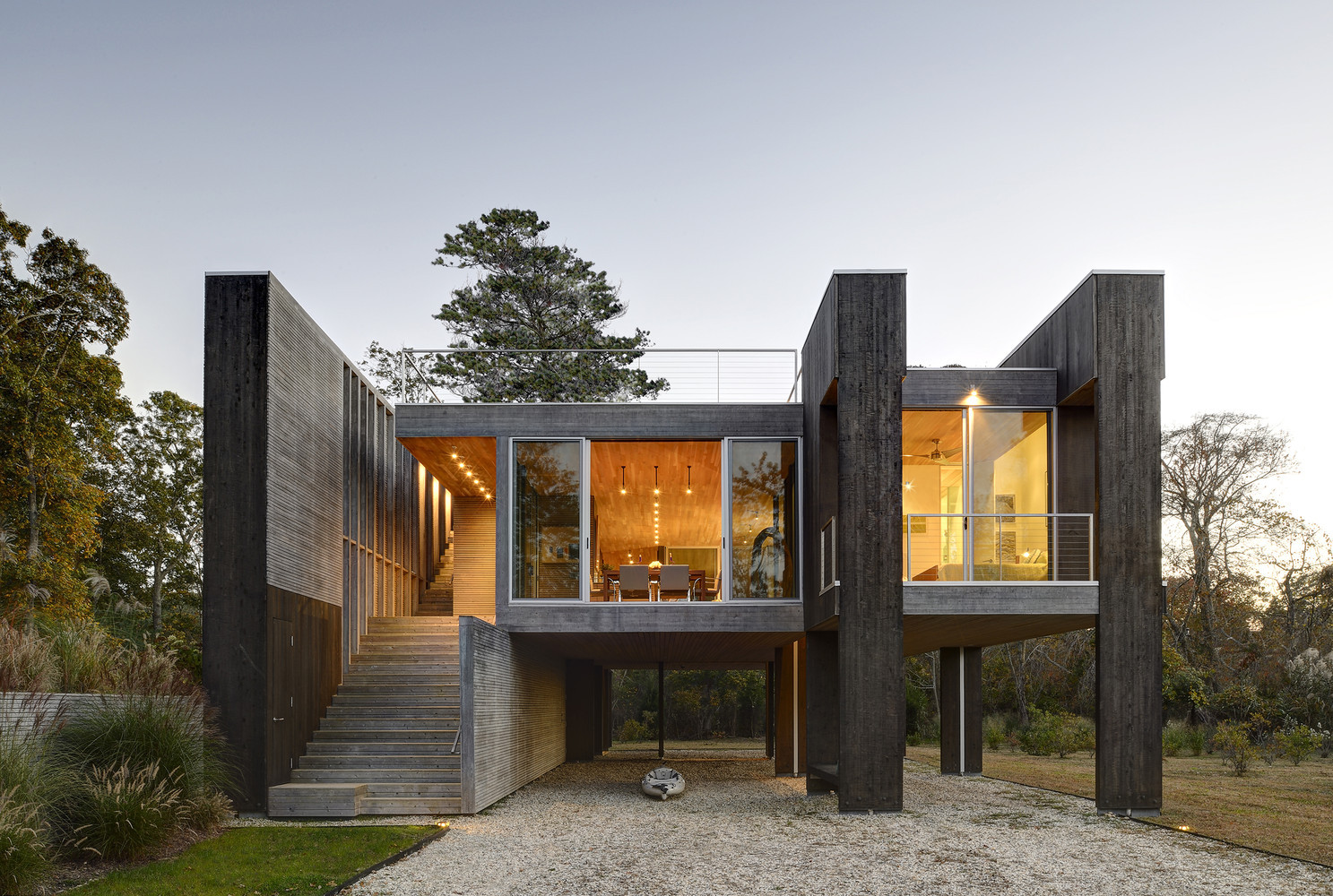
20 May 6 Architecture Strategies to Fight Flooding
Flooding is a significant problem for buildings all around the world, including architectural treasures like the Farnsworth House that have been plagued by the issue time and time again. In particular, one-third of the entire continental U.S. are at risk of flooding this spring, especially the Northern Plains, Upper Midwest, and Deep South. Last April, deadly floods decimated parts of Mozambique, Malawi, Zimbabwe, and Iran as well, resulting in a low estimate of 1,000 deaths while tens of thousands more were displaced. While architecture cannot solve or even fully protect from the most deadly floods, it is possible – and necessary – to take several protective measures that could mitigate damage and consequently save lives.
Elevate Structures Above the (new) Flood Level
To start, architects should build the structure above the flood level to minimize damage if a flood does occur. The flood level elevation for specific areas can be found online using programs such as the Estimated Base Flood Elevation Viewer run by FEMA. With this information, architects can discern how high to raise the building and with what method they should do so. One common way of elevating is by building the structure on columns or stilts. In other cases, the solid foundation can simply be raised higher. For more specific information on what to do, architects should assess the climate and flood history of their area and consult information available online such as this manual on coastal construction in particular.
Implement Flood Resistant Material
Flood resistant materials are those which can last in contact with floodwaters for at least 72 hours without significant damage. Flood water can be both hydrostatic (standing water) and hydrodynamic (flowing water), and in most cases will result in displaced foundation walls, collapsed structures, floating fuel tanks, scouring, and more. ‘Significant damage’ suggests any damage requiring more work that cleaning or low-cost cosmetic repair, such as painting. To prevent these damages, flood-resistant materials must be durable and resistant to excessive humidity. Examples include concrete, glazed brick, closed-cell, and foam insulation, steel hardware, pressure-treated and marine-grade plywood, ceramic tile, water-resistant glue, polyester epoxy paint, and more.
Raise or Floodproof HVAC Equipment and MEP Components
Locating service equipment above the flood protection level is generally the best way to protect it. Such equipment includes heating, ventilating, air conditioning, plumbing appliances, plumbing fixtures, duct systems, and electrical equipment including service panels, meters, switches, and outlets. If these components are inundated in floodwater for even a short period of time, they can become severely damaged and will need to be replaced. Electrical equipment in particular can potentially cause fires if short-circuited. It is best that these components are raised above the flood level, but if necessary, they may be designed to prevent damage from flooding, whether through waterproof enclosures, barriers, protective coatings, or other techniques to protect vulnerable components. For precise requirements, architects should consult municipal codes.
Incorporate Foundation Vents or a Sump Pump
An example of wet floodproofing is to install foundation vents, which allow floodwater to flow through the home rather than pool around it. While this solution may seem like a counterintuitive one due to the damage it could do to the interior of the property, it actually provides an outlet for the flood water and relieves the damaging pressure that floodwater puts on the windows and walls. If the interior – usually a subgrade basement – is prepared using flood damage-resistant materials, hydrostatic openings, and protected key equipment, the damage can be limited, although post-flood clean-up will be necessary. Similarly, a sump pump is a type of equipment that pumps water out of basements where flooding happens regularly. Sump pumps with battery backup are highly recommended to allow them to continue functioning when the power goes out.
Design and Erect Permanent Barriers
Placing a permanent barrier around the structure in question can prevent floodwaters from reaching it. Such barriers should be constructed using a floodwall made of concrete or masonry, or by using a levee made of compacted layers of soil with an impervious core. While this solution may seem like the simplest or most obvious, both floodwalls and levees require extensive maintenance, and levees need a significant amount of land and usable soil materials for construction.
Install Sewer Backflow Valves
Sewer backflow valves prevent flooded sewage systems from backing up into a home. In certain flood-prone areas, this issue is common, and can cause damage that is both difficult to repair and hazardous to occupants’ health. Generally, gate valves are preferred over flap valves because they provide a better seal against flood pressure.


